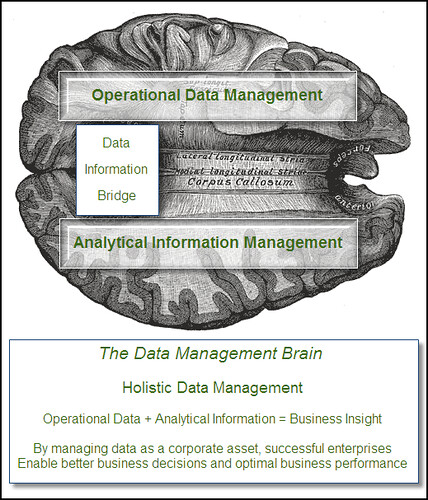With the proliferation of the newer, generic CRM systems into the NFP marketplace (i.e. Salesforce, Microsoft CRM etc), it can be easy for a smaller charity who has never before had the opportunity to use such powerful systems to believe that such systems are so easy to use that they won't even need a "database manager". Please don't believe that. You will need someone, whatever they are called, to manage the database/data to some extent, no matter what size you are.
Just because you are going to run the new database through your browser - which may indeed make it more user-friendly on some occasions - that doesn't mean that it will be so easy that it will "run itself". Someone in your organisation still needs to "manage" it in one way or another.
The good news is that with some of these systems (and indeed, some 'traditional fundraising databases'), such a person doesn't have to be an old-school techie. They possibly won't need to write SQL code, learn a complex report writer or understand entity-relationship diagrams. But they will need to be "data aware" - data savvy as I often call it. In fact, job titles such as "Data Manager" and "Head of Data" are often more accurate and more suitable than "Database Manager" or "Database Administrator".
This is because someone still needs the following attributes: to be able to understand how data is structured and recorded on the system; to be able to review a new user request and then recommend whether a new field is added or whether new codes should be appended to an existing look-up table; to understand and interpret what benefits the new database can bring to your fundraisers and fundraising. To control duplicate records... Someone still needs to have some level of control so that not every user of the system is adding data (and codes) in any old way they want (because it is so easy to do so now…) And so on.
Because if you don't have good data, standardised procedures and trained users who understand what they are doing on the database, then don't be surprised if you can't create the reports you need, or you take much longer to segment the database for targeting your donors - or, after a few months of installing the new system, you find your users criticising it because it isn't what they were promised…
The database - and the data - is the very base of a charity's infrastructure for their information needs. New CRM systems may make data management easier but you still need someone to manage that.
My views on the database market for charities and NFPs: packages, CRM and bespoke developments. In particular, but not limited to, fundraising and membership.
Tuesday, January 27, 2015
Tuesday, January 20, 2015
My New Book: 102 Tips on How to Buy Fundraising Databases and CRM Systems

It is written for people whose day job is not the procurement of new databases - and you do not have to be technical to understand it. It is for fundraising managers, fundraisers, database managers, charity IT staff, those working in supporter services and indeed for anyone who has been given the sometimes daunting task of buying a new fundraising database or CRM system.
It covers the basics of procurement (strategic advice, costs, software demos, project management) but also delves into more detail on supplier management, considerations about database development, the whole tender process and a chapter dedicated to the 'generic' CRM systems (Microsoft CRM, Salesforce et al) which are challenging the more traditional fundraising database packages.
It is available as a paperback on Amazon, on Kindle and as a simple, instantly downloadable PDF document. It costs £20 (+ VAT for UK/EC residents).
I hope it inspires, assists and enhances your buying process, whether you are already comfortable with a procurement exercise or even if you have never managed one before. Think of it as your own consultant seated by your side as you go along – only at a fraction of the cost! I hope you find it useful.
Where to Buy It...
The book costs £20 (+ VAT for UK/EC residents), and is available from:
 PDF document - instant download from my website PDF document - instant download from my website |
||
Monday, January 19, 2015
Differentiating Suppliers of the Same Software Platform
An interesting challenge is arising on CRM platforms. With more and more companies producing 'templates' for fundraising and membership solutions on the same platforms (mostly Dynamics and Salesforce), I am finding that I see quite similar looking software from different suppliers. Which leads me to ask myself: if the platforms are that good and are right for my clients, and the software is starting to blur into the same sort of solution, then how do I distinguish between the different offerings?
First, it's about the supplier
What this shows straight away is the importance and significance of the supplier themselves. i.e. their approach to your project, their empathy with your organisation and staff; the people they employ; their sector knowledge. The added value they can bring to the project and to your organisation. All the usual sort of stuff I discuss frequently on my blog, but with a different level of emphasis because of such a need for comparisons and differentiators.
And that to me is still the most important thing.
But it is the software too
There is more you can also do to look at the software more deeply. Even if it looks similar (which it probably will because it will be on the same platform) it will of course be different when you look closer, especially in the areas of fundraising or membership. Some of the specifics you could consider include:
- How are the companies actually presenting the core data which you want to see? Is it truly intuitive? Is there flexibility in its presentation? Have they understood how fundraisers want to see and use such data?
- Look especially more deeply at the most critical parts of the software. For most charities who are doing fundraising this will be the income management. i.e. If a supplier is offering you a solution with some sort of template to manage your cash donations and regular donations, then how have they structured that? Have they used the platform's standard entities? Have they used custom entities? How have they created a system where you can record a pledge and its instalments? How have they created a system which enables you to create a direct debit mandate and then record all the future payments against that? And do they really understand regular giving itself? And how about reporting of this area - that takes some thinking about. This will start to show-up differences and suppliers' comprehension of this crucial area.
- What about batch entry of income? What about the data entry of more complicated aspects of some fundraising data - e.g. in memory relationships, corporates and their contacts?
- How have they actually coded the system to process direct debits? Can they manage high volumes - not just your current levels but if you increase them too?
- Do they understand Gift Aid and how have they linked their system with HMRC's Charities Online?
- How have they optimised the more common CRM elements for charities' needs? e.g. opportunities, leads. Have they shown how you major donors and HNWI fundraisers could get the most out of such systems?
Finally, you'll notice I haven't mentioned cost. So, yes, cost does of course distinguish and separate suppliers, but it's never as simple as saying that the cheaper solution is the one to go for. There is so much more to cost than that! Have a look at my blogs on cost factors and indeed, everything else about procurement.
Monday, January 12, 2015
My Predictions for NFP CRM Systems in 2015
It's that time of year when people predict what's going to happen in the next 12 months and so I thought I would join in. So here goes: these are my predictions for what will happen in the arena of UK NFP fundraising databases and the CRM market in 2015:
1. The increasing adoption of Salesforce and Microsoft CRM Dynamics - especially for the larger charities looking for a new system. In the last 12-18 months, for the tenders for fundraising databases that I know of amongst larger charities, more have been won by a company selling Salesforce or Dynamics - and I think this pattern will continue at the moment. Blackbaud CRM will also be in the mix but it has not been as successful of late here in the UK (outside the Higher Education sector) and ACS's CareNG does not seem to be competing at the same level as the others right now.
So at the moment, for larger charities who are also looking for a development platform, I believe Dynamics and Salesforce will top the sales.
That said, I wouldn't be at all surprised if one or two larger charities implementing CRM systems for fundraising find it tough going. There are still very few sizeable UK charities using such systems for their dedicated fundraising database and I think some may find it takes longer and/or costs more than they expect.
- As a 'sub-division' prediction on this, I also think that 'templated' versions of Salesforce and Dynamics will grow in popularity - i.e. offerings from third-party suppliers with some built-in charity functionality such as Direct Debit management, Gift Aid etc - both in terms of client adoption and new templates being developed by more companies. Plus Salesforce's own NGO Connect adaptation could be interesting to watch if it is developed for the UK market.
That said, Raiser's Edge NXT still has some questions hanging over it as I have highlighted before in another blog post, so it will be very interesting to see how that does develop.
I also believe that CiviCRM will win deals amongst mid-size charities but it needs one or two more significant implementations in the UK to really get it to be more widely adopted. (And of course Salesforce and Dynamics will also be an option for this level, but for those organisations with 'pure fundraising' needs there would need to be a good reason to be building from 'vanilla' for such systems - hence, again, my prediction for the growth of CRM fundraising templates.)
- I also think that Blackbaud's existing Raiser's Edge 7 is not going to disappear for some time. It (like other similar products) still provides solid functionality for charities' operational fundraising requirements, so despite its age and shortcomings it will probably continue to sell for at least this year, and carry on being used for at least the next few years by many existing clients.
Thus the need for the increased power and flexibility of system extensibility has come to the fore. Charities want to be able to change forms and screens, insert entities and fields and add data integrity/business rules etc more easily than they have been able to in the past. And they want to be able to do this themselves, without having to be technical geniuses. But they also want to at least have the option of being able to get down-and-dirty with programming code if they desire to do that and if they are capable of doing so, and to be able to use such code so that they can extend the database beyond what it was originally developed for - but in such a way so that it won't break it in the future when new standard upgrades are released.
The CRM systems are leading the way in this but the new products from Blackbaud and thankQ are catching-up in some (if not all) areas and some degree of extensibility will no longer be a nice-to-have for new implementations.
4. Charities will want to integrate their fundraising/CRM database with their website and other data sources more tightly and with more automation… but they will still find it hard. This fundamental need is not new of course; and my point here is really a bit of an 'anti-prediction' in that although I predict the increasing desire for such integration, I still think it is going to be hard for more automated integration apart for those charities who have a decent budget and good in-house technical skills, or for the more 'common' data sources such as JustGiving.
Ironically, from the point of view of attempting to be Nostradamus, I hope I am wrong about this prediction.
5. Software companies and salespeople will continue to push Mobile/Social Media/Cloud as their innovations. Which is hardly a radical prediction, is it! After all, this is already happening. And of course these technologies do offer the potential of great benefits and the ability to interact with our fundraising/CRM systems.
But why I have highlighted this area is because I want to add that you shouldn't follow these trends blindly and you shouldn't be buying a new system just because it offers such capabilities. Instead, work out why or how such technologies could be used with your database. For example, it is not just a matter of recording tweets in your CRM system (I mean, are fundraisers really going to look through hundreds of tweets on a fundraising database?); it is not just about seeing a supporter's Facebook page from within the CRM (although that can offer some speed of access); and it's not just about accessing your database from your mobile/tablet without a good business reason, no matter how flashy the salespeople make that look. Although, yes, mobile access for event fundraisers at an event, for development staff visiting alumni, for member access - absolutely, that sounds good. So do it where it's right to do so - but not just for the sake of it.
A final note on this: I should add that there are of course many more fundraising databases available (AdvantageNFP, Harlequin, KISSS etc) and CRM systems (Workbooks, SugarCRM etc) - see the itforcharities website for such lists - and my references to the systems above do not mean that they are necessarily right for you or your particular project. If you do look for a new database then you need to do a proper analysis and procurement exercise and select whichever system and supplier is right for your organisation.
Subscribe to:
Posts (Atom)




